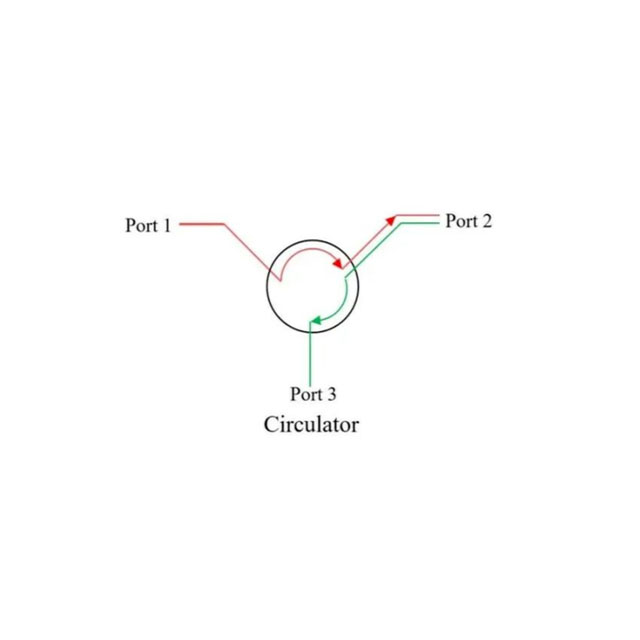In radar system, the circulator is the core passive device to realise efficient isolation and directional transmission of transceiver signals. Through the non-reciprocal property of ferrite material, it precisely guides the signal flow: when transmitting, it transmits high-power pulses from the transmitter to the antenna port in a directional manner, and when receiving, it guides the weak echoes captured by the antenna into the receiver channel without any loss, thus solving the technical difficulties of transceiver co-antenna and protecting the sensitive receiver components from damage. At the same time, it blocks the interference of the transmitting signal to the receiver, thus solving the technical problem of transmitting and receiving with a common antenna, and protecting the sensitive receiving components from damage. Its unidirectional transmission characteristics greatly enhance the stability and detection accuracy of the radar system, becoming an indispensable ‘signal traffic commander’ for modern radar RF front-end.
Key roles of the circulator in radar:
- Transmission/reception isolation and signal directionality
Principle of operation (example of a three-port circulator)
Port 1: connects to the Transmitter (TX).
Port 2: Connects to the antenna.
Port 3: Connects to the receiver (RX).

Transmit state: A strong transmit pulse enters the circulator from TX (Port 1). Due to the non-reciprocal nature of the circulator, almost all of the signal goes to Port 2 (antenna) and only a very small portion goes to Port 3 (RX).
Receive state: A weak echo signal enters the circulator from the antenna (Port 2). According to the non-reciprocity of the circulator, almost all of the signal flows to Port 3 (RX), and only a very small portion flows to Port 1 (TX).
- Receiver protection
As a ‘firewall’ at the front end of the receiver, the circulator can isolate the residual energy of the transmit pulse and strong external interference (e.g. neighbouring radar signals), preventing the low noise amplifier (LNA) from burning out or saturating.
The circulator is often combined with a limiter to form a receiver protection circuit to enhance reliability.
- System Stability Guarantee
A circulator absorbs ineffective energy reflected from the antenna end, avoiding transmitter oscillations caused by impedance mismatch.
At the same time, the circulator reduces inter-channel signal crosstalk, optimising overall signal integrity.
Radar’s core requirements for a circulator:
Frequency range: Adaptation to multi-band communication requirements
Isolation: Determines reverse signal blocking capability
Insertion loss: Signal transmission attenuation
Power capacity: Tolerance to high power transmission scenarios
Conclusion: A circulator achieves transceiver switching that is passive, requires no control signals, has extremely fast switching speeds (almost instantaneous, limited only by the speed of electromagnetic wave propagation), has low power consumption, and is extremely reliable. This is critical for systems that require fast switching (e.g., pulsed radar). Without a circulator, it is difficult for modern high-performance radar systems to operate stably and reliably.



